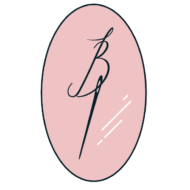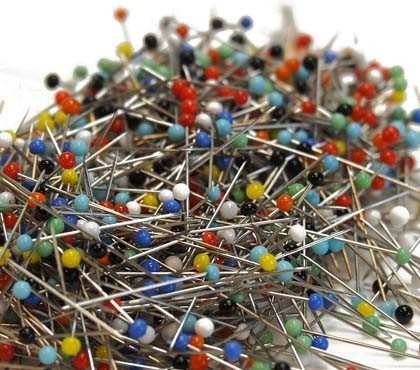Estimated reading time: 3 minutes

Sorting glass-headed pins is sometimes a necessary job. If you have been sewing as a profession or hobby for a while, you have probably been using the same head pins. All these pins sit comfortably together on the pincushion for a long time
Although glass-headed pins, as well as most other types, are made of nickel-plated steel so they do not rust. But when they get old, they sometimes develop a rust spot or a blunt point. Or they simply become bent from frequent use…
Selecting out glass-headed pins, taking out old ones
Old age comes with defects and your pins cannot escape them either. My pincushion also had quite a few “broken” pins, so I took a closer look at them all. Have been using the same pins for years and so enough of them needed to be replaced, about a third I estimate.
Of course I first bought new pins to replace the old glass head pins after sorting them.
If your pin has a blunt point, it can be thrown away. Feel the metal of the pin from the head to the point, isn’t it smooth? Get rid of it! Roll the pin between your fingers and you can easily see whether it is bent. If the head is not completely in the middle of the pin, that is not a problem, but the metal is bent, then it can also be thrown in the trash. Finally, visually inspect for rust spots. Mine had a lot of rust spots just under the head
Even though I immediately throw away a pin that doesn’t feel good during use, there were still many bad ones on my pincushion. Checking your glass-headed pins every now and then is certainly not an unnecessary luxury!
What are headed pins?
A pin is a metal rod with a sharp point and a head. If it is a glass head pin, it has a glass ball on top so you don’t hurt your fingers. Sometimes they are made of plastic, usually cheap pins have a plastic head. The disadvantage of this is that you do not want to get them under the iron, as then you immediately have a melted plastic dot on your workpiece that can no longer be removed

So only use real glass-headed pins from Prym or Clover or headless pins. There are also magic pins from the Taylor Seville brand with a soft ribbed head in different sizes and shapes. These heads are also heat resistant. If you have paper head pins that are often used for quilting, they can withstand a little heat, but I wouldn’t iron too much over them.
So choose good glass head pins when purchasing!

